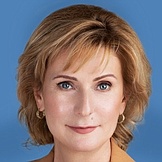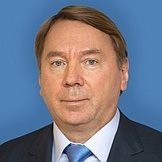Regional flags and emblems


PROFILE
Established 1147
Moscow is the capital of the Central Federal District
Area 2,600 sq km
Population 13 258 300 (2025)
Ethnic groups
(2020 National Census, %)
Russian – 90,21
Other – 9,79
Administrative divisions (2024)
Inner-city areas — 146
Geography and climate
Moscow is the capital of the Russian Federation, a city of federal significance. It is in the centre of the European part of Russia, located between the Volga and Oka rivers, at the junction of three physical and geographical areas: the Smolensk-Moscow Upland, the Moskva River-Oka plain and the Meshchera lowland. Moscow has several low elevations: Borovitskaya, Sretenskaya, Tverskaya, Trekhgorye on Presnya, Vorobyovy Gory, Taganskaya and Lefortovskaya.
About 30% of the city is taken up by the valley of the Moskva River, which has an asymmetric structure and includes a floodplain and three terraces above the floodplain: Khodynskya, Mnevnikovskaya and Serebryanoborskaya.
The climate is temperate continental. January temperatures average –5.2 °C, July temperatures average +19.9°C. Mean precipitation 540–650 mm per year. In the warm season, winds from the south-west prevail, and in the cold season, from the north-west.
On the territory of Moscow there are specially protected natural areas: the national park of federal importance ”Losyny Island“, about 25 natural and historical parks, nature reserves and monuments of regional importance.
Government
The legislative branch is represented by the Moscow City Duma, which is the permanent, representative and only body of legislative authority in the city of Moscow.
The Moscow City Duma has 45 deputies elected in single-member constituencies.
The current Moscow City Duma was elected in September 2024. Its term expires in September 2029.
The executive branch is the Government of Moscow headed by the Mayor of Moscow; there are also sectoral, functional and territorial executive authorities.
The Mayor of Moscow is the city’s highest-ranking official, who heads the supreme executive body of the Moscow city government, elected for five years by Russian citizens who permanently reside in Moscow. The current Mayor’s term of office expires in September 2028.
The Moscow Government is the supreme permanent executive authority and a collegial body that has general competence and ensures coordinated activities of other executive authorities of Moscow.
Economy and natural resources
Moscow is the political, cultural, economic and research centre of our country; it is also an important transport hub and the largest financial centre. It is here that the majority of officially registered banks are based.
Moscow's economy is dominated by the services sector, which includes trade, hotel, restaurants and entertainment facilities, healthcare, education, security and real estate services. Moscow accounts for as much as 30% of Russia’s retail.
The industrial sector accounts for over 16% of the regional GDP and is represented by machine building, ferrous and non-ferrous metals, printing, the light, chemical, and defence industries.
The city’s major industrial enterprises include Gazprom-neft — Moscow Oil Refinery, Elektrozavod holding company, Moscow Elektroshchit plant, Almaz-Antey Air and Space Defence Corporation, MKB Vympel, Khrunichev State Research and Production Space Center, Electrozavod ERSO and others.
Moscow is the largest engineering centre where a considerable part of Russian aviation, space, nuclear, defence and other products are designed and developed. Moscow features the head offices of nearly all major Russian industrial holding companies and representative offices of the world’s largest companies.
The Moscow Government is fostering industrial development through tax benefits and incentives. The city includes the special economic zone Technopolis Moscow and about 40 technology parks and industrial parks.
Tourism and related services play a significant and growing role in the economic development of the Moscow metropolitan area.
Moscow is the largest transport hub in Russia. There are three river ports, six airports and 10 railway stations. 11 railways, 15 motorways, 5 gas pipelines, and 3 oil pipelines converge in Moscow.
Culture and tourism
Moscow is a major cultural and tourist centre in Europe and the world; it is among Russian cities with the richest historical and cultural potential. Its architectural landmarks – the Kremlin, Red Square and Bolshoi Theatre are known worldwide as symbols of Russia. The Moscow Kremlin and Red Square, the Church of the Ascension in Kolomenskoye and the Novodevichy Convent are on the UNESCO World Heritage List. Moscow is one of the five most visited and popular cities in Europe and one of the ten most visited cities in the world.
Today Moscow has more than 100 theatres and over 200 museums. Among the many art museums, there are the State Tretyakov Gallery and the Pushkin State Museum of Fine Arts. Russia’s most valuable treasures can be seen in the Armoury Chamber of the Moscow Kremlin. There are vast exhibition venues such as the Central House of Artists, the Manezh exhibition hall, and others. There are also private art galleries, many specialising in contemporary art.
Moscow has film studios that produce the best Russian films, recognised masterpieces of international cinema: Mosfilm, Gorky Film Studio, and Soyuzmultfilm.
There are about 120 parks in Moscow, which have recently been modernised and renovated to make them more convenient, due to the developed infrastructure. The largest parks of culture and leisure in Moscow are Gorky Park, Sokolniki, Izmailovsky, and Kolomenskoye State Museum Reserve.


